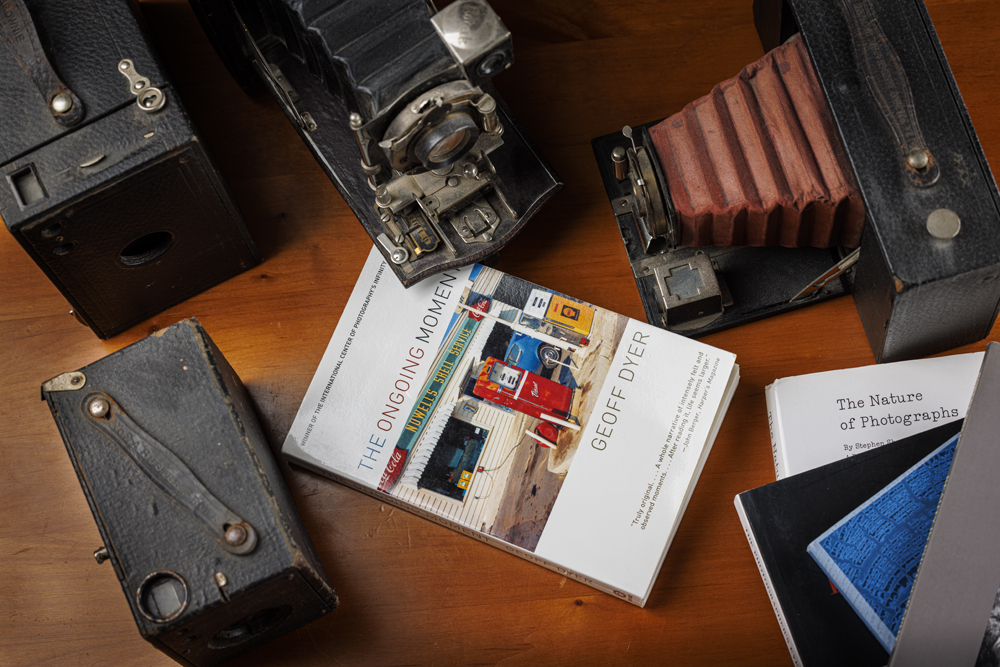The Ongoing Moment by Geoff Dyer
Preparing the post for Geoff Dyer’s See/Saw: Looking at Photographs gave me an opportunity to refer back to Dyer’s 2005 book The Ongoing Moment.
Although some of the book’s details had slipped from my mind, I had not forgotten how enjoyable The Ongoing Moment is.
The unifying subjects of the book are exactly that: subjects. As in the subjects of photographs and photographers. What John Szarkowski referred to as “The Thing Itself” in The Photographer’s Eye. Which is an acknowledgement that most photographers relay on an actual, physical subject to create an image, while other arts are not so bound by the physical world.
The Ongoing Moment is not a chronological history of photography nor is it a collection of biographies of individual photographers.
It is an exploration –a “meander” might be a better word for it – through the common subjects of great photographers.
Dyer takes the work of greats like Edward Weston, Alfred Stieglitz, Paul Strand, Walker Evens, Robert Frank, Diane Arbus, Stephen Shore and others and creates a literary Venn diagram with photographers in one circle and subjects in another, and then explores the overlaps.
He notes how photographers seem to be drawn to so many of the same subjects: roads, signs, benches, gas stations, barbershops, drive-ins… and how they have treated the subjects in ways that are often the same and often very different.
Some subjects are universal – the human body and the poor for example – but others can seem random. Why, for example, are so many photographers drawn to fences?
But, to describe the book in this way is selling it short. Dyer (who is not a photographer) has both a discerning eye and an encyclopedic familiarity with photographers and their backstories. He has accumulated a stunning collection of anecdotes about great photographers that he weaves into his observations, adding context and insight into their work.
The premise and structure of Dyer’s intersecting circles of artists and topics enables him to slip seamlessly from subject to topic to topic to subject, taking readers down a river of consciousness that can leave the reader with no idea how they’ve gotten from point A to point H. But, like any great storyteller, it’s the journey not the specific path that matters.
He may (and does) begin with a story about Edward Weston’s spirited defense of the challenges facing a photographer trying to coax camera and film to produce an honest and revealing portrait of a subject. That leads to a portrait of Robert Frank taken by Richard Avedon, which in turn leads to a discussion of context when viewing a portrait of Paul Strand by Alfred Stieglitz, which quickly melds into a discussion of the complicated relationship between Stieglitz and Strand. A relationship that, as most relationships with Stieglitz did, began as that of mentor and mentored, but which soon entangled both in the personal lives and loves of each.
Soon, before we know it, we are deep into a discussion of Stieglitz’s nude photos of Georgia O’Keeffe and Rebecca Strand, which brings us back to Edward Weston and his photos of lovers, including his most famous muse and collaborator, Charis Wilson. And, so it goes, as Dyer takes us along as he explores the relationship between Weston and his most famous and appealing collaborator. If anyone should doubt it, it was definitely the case that Charis Wilson was a full partner in the creation of Weston’s portraits of her.
As you wander through the book with Dyer, it becomes clear why there are no chapters. Dyer moves seamlessly through his photographers and the subjects they photographed, with only an occasional pause as he reflects on these ongoing moments.
One of the beauties of the book is that you can open it to almost any page, begin reading and quickly be drawn in, confident that Dyer will soon be regaling you with enlightening and insightful anecdotes.
If you have ever been drawn to any of common themes and subjects that have fascinated photographers for much of the past two centuries, this book will have you thinking and looking at photographs in new ways. It is the kind of book that you can read once, put aside and pick up again in six months, a year or even two or three years and find new pleasures and lessons.
The Ongoing Moment at Amazon
See/Saw at Amazon
John Szarkowski’s The Photographer’s Eye at Amazon
